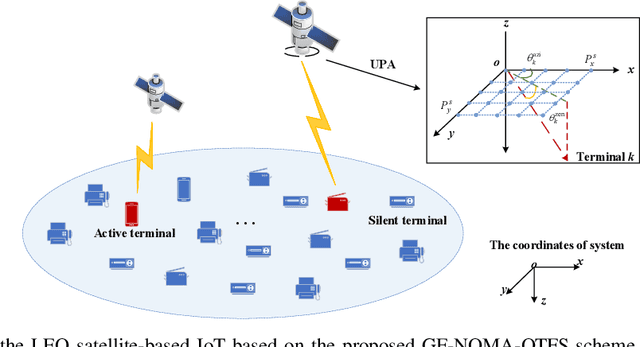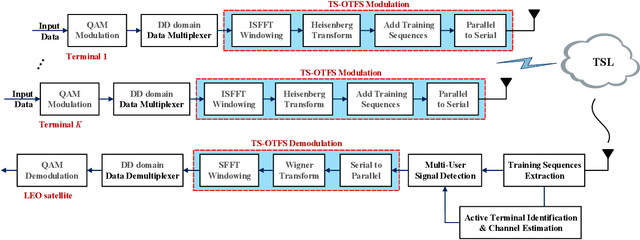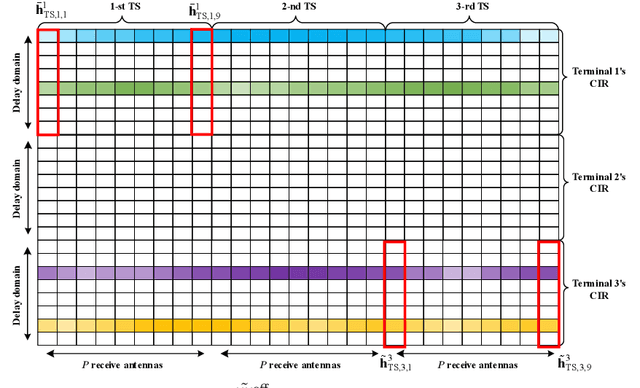Active Terminal Identification, Channel Estimation, and Signal Detection for Grant-Free NOMA-OTFS in LEO Satellite Internet-of-Things
Paper and Code
Jan 06, 2022



This paper investigates the massive connectivity of low Earth orbit (LEO) satellite-based Internet-of-Things (IoT) for seamless global coverage. We propose to integrate the grant-free non-orthogonal multiple access (GF-NOMA) paradigm with the emerging orthogonal time frequency space (OTFS) modulation to accommodate the massive IoT access, and mitigate the long round-trip latency and severe Doppler effect of terrestrial-satellite links (TSLs). On this basis, we put forward a two-stage successive active terminal identification (ATI) and channel estimation (CE) scheme as well as a low-complexity multi-user signal detection (SD) method. Specifically, at the first stage, the proposed training sequence aided OTFS (TS-OTFS) data frame structure facilitates the joint ATI and coarse CE, whereby both the traffic sparsity of terrestrial IoT terminals and the sparse channel impulse response are leveraged for enhanced performance. Moreover, based on the single Doppler shift property for each TSL and sparsity of delay-Doppler domain channel, we develop a parametric approach to further refine the CE performance. Finally, a least square based parallel time domain SD method is developed to detect the OTFS signals with relatively low complexity. Simulation results demonstrate the superiority of the proposed methods over the state-of-the-art solutions in terms of ATI, CE, and SD performance confronted with the long round-trip latency and severe Doppler effect.
 Add to Chrome
Add to Chrome Add to Firefox
Add to Firefox Add to Edge
Add to Edge